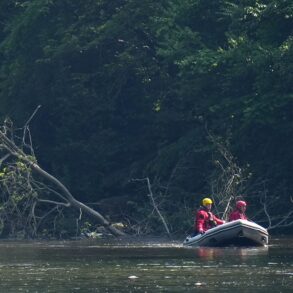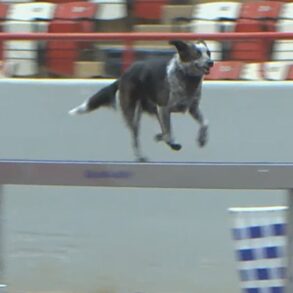
Humans learned the hard way in 1908 that sometimes classical conditioning can come back to bite you in the arse – or, as it were, shove your kids into a river. The tale goes that a “hero” dog who was rewarded with a steak for saving a drowning child decided to make it into a full-time gig, shoving unsuspecting children into the Seine so that it could fetch them out again. You’ve got to respect the hustle, I guess.
The story, published by the New York Times on February 2, 1908, begins with a Newfoundland dog owned by a man living on the banks of the Seine just outside Paris. This heroic pooch went leaping over hedges and into the water when it heard a child’s cries, rescuing the wee tyke after they had fallen in while playing. A straight-up rescue, and one that was reportedly – and rightfully – met with a steak reward for our brave Newfoundland dog.
In what would already seem like a bit of a strange coincidence, the exact same dog rescued another child from the Seine two days later. Another life saved, another steak, and it was here that a pattern started to emerge.
Children started falling into the water more and more frequently, getting rescued by the same dog each time until “hardly a day passed” that a child wasn’t taking an involuntary plunge and getting pulled out by the Newfoundland pooch. Residents grew concerned that a “mysterious criminal” might be at work, so set up a watch to catch the horrid child shover red-handed.
The perpetrator would be caught, but instead red-pawed. Yes, it seemed the dog had picked up on the fact that if it pulled a child from the Seine, it would get lots of food and attention. However, the children weren’t falling in at a rapid enough rate, so every time it saw a child playing near the edge of the bank it would shove them in before pulling them out. “He had thus established for himself a profitable source of revenue,” said NYT.
The New York Times describes the tale itself as “a good story,” so the events are to be taken with a pinch of salt, but the idea that a dog might learn to do something for a reward is far from far-fetched. Pavlov’s famous theory of classical conditioning demonstrated how dogs could learn to anticipate a reward with a stimulus (though the actual experiments themselves were a lot more horrific than some food and a few bells), so why couldn’t that stimulus be yeeting a child into the Seine?
Let the Newfoundland Seine Shover be a reminder to choose carefully when rewarding your dog’s behavior.
An earlier version of this article was published in March 2022.
This post was originally published on this site be sure to check out more of their content.













































